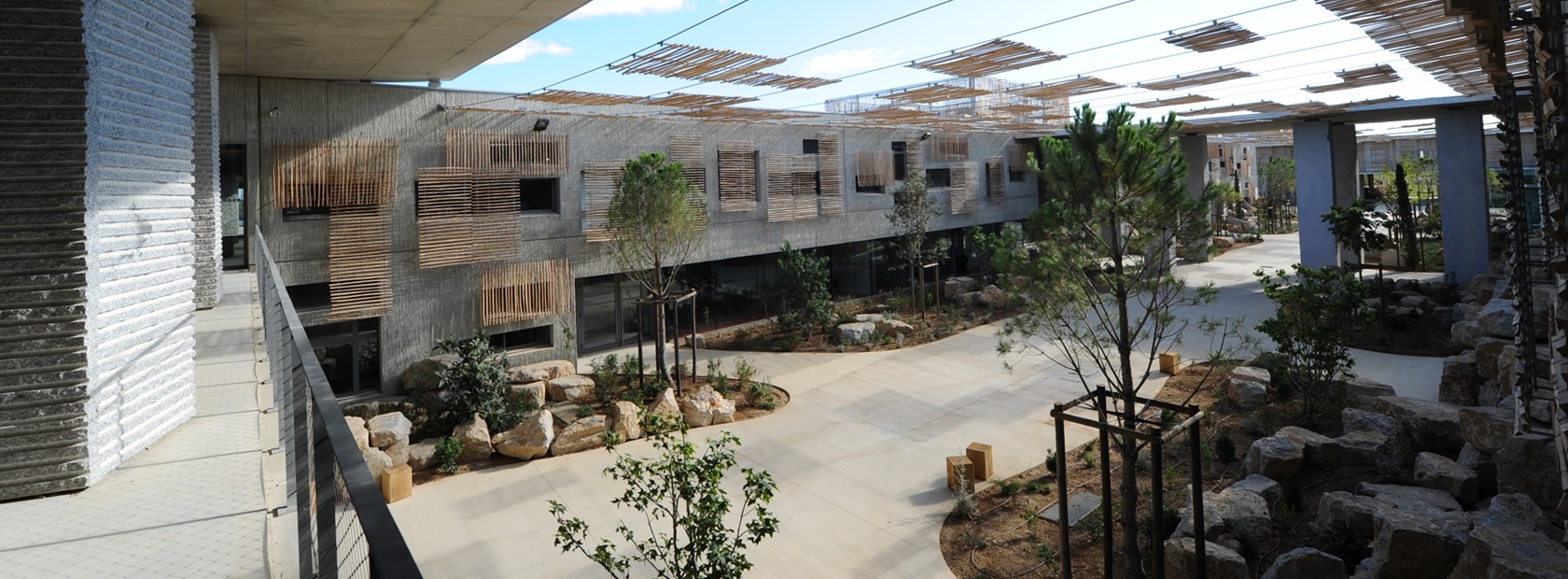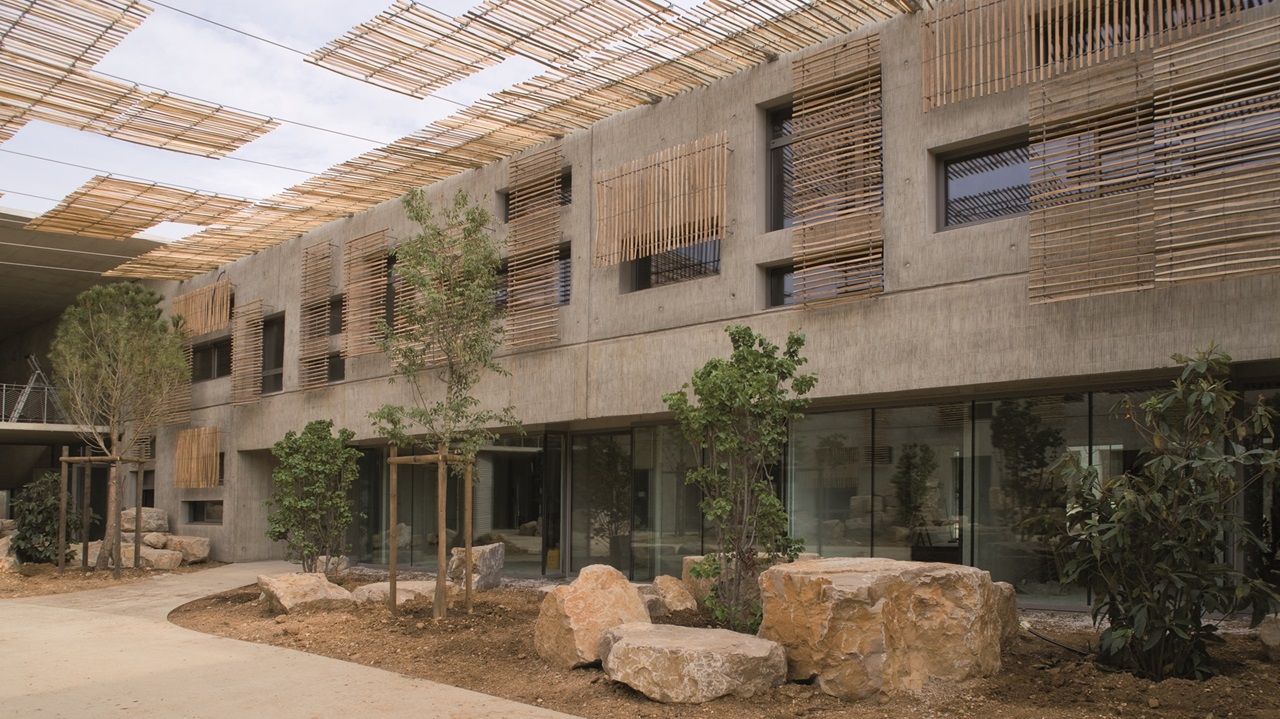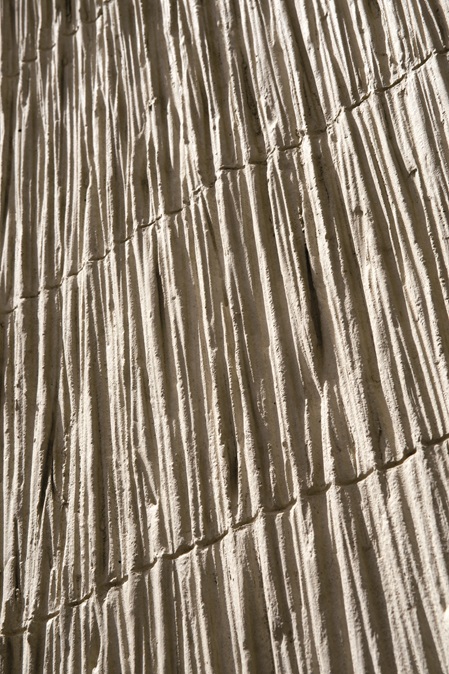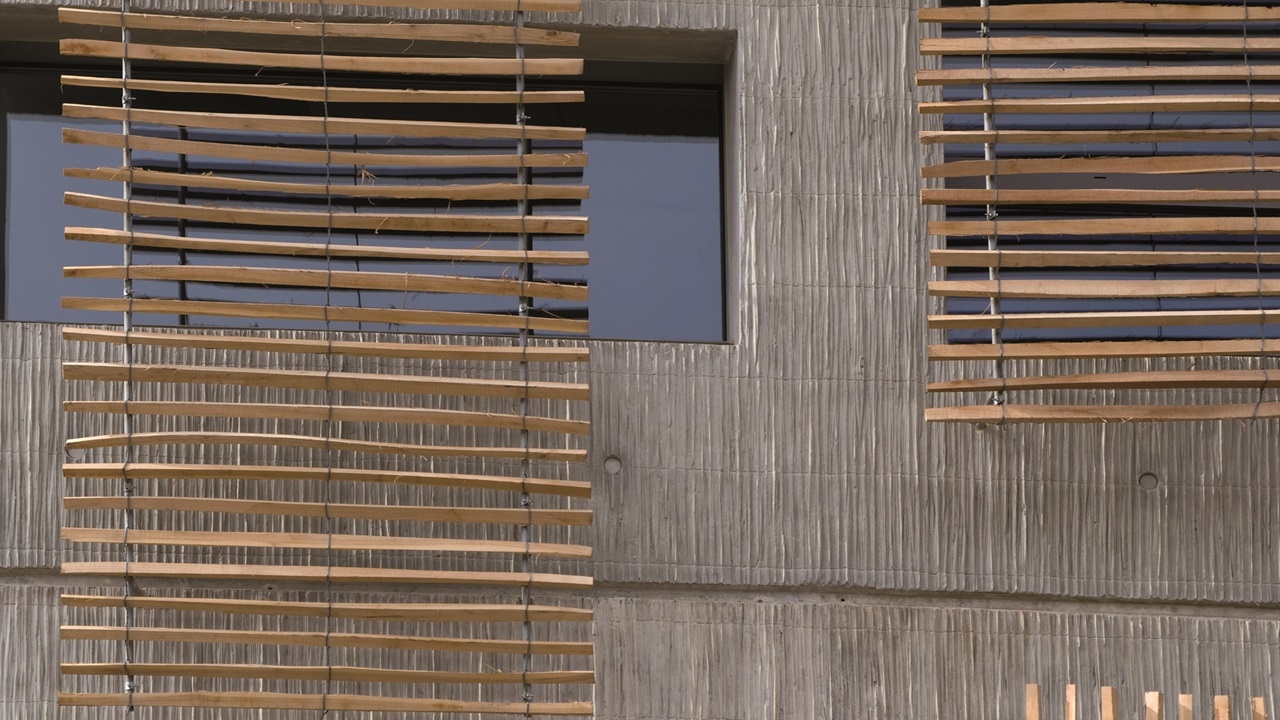Remembering old construction techniques in concrete
It takes a certain amount of intuitive flair to combine a modern form of construction with another, older form, the use of which was rapidly receding in people's memories, to create an example of discerning architecture. The aesthetic outcome of such a process is what architect François Fontes created with the Lycée Marc Bloch in Sérignan. He was responsible for the design of a complex that has provided for the education and leisure needs of a great many children since it opened in autumn 2013.
The facade surface of the buildings is for the most part fair-faced concrete that reproduces a relief pattern of bundled reeds in its textured finish. In choosing this design, the architect is referring back to 700-year-old construction technique used in the Camargue. It is based on the use of reeds as an organic construction material and earlier formed a source of income for women. Their task was to go down into the marsh and harvest the reeds. After they cut the reeds with a long-handled scythe, they carried them to dry land by boat, where they were bundled and tied together with twine or wire. The organic material was used as a roof covering, for insulation and even for making walls. The construction elements it was used for usually showed a typical relief. It was this typical relief that François Fontes picked up and gave new life to in the exposed concrete facade of the complex. He chose NOEplast textured formliners from NOE to achieve this unusual design in the surface of his concrete.
A new formliner
NOE offers customers the option of creating their own individual motifs.
François Fontes took advantage of this opportunity and designed a completely new formliner. So that the concrete relief was as close to the original as possible, the manufacturer used natural reeds in the production of the NOEplast textured formliner. A mould of the reeds was made with liquid polyurethane.
The formliner has been on the market since the beginning of 2014. The tradition at NOE is always to name a new textured formliner after the place of first use of the motif. This time, it is named after the area where the traditional reed construction method originated. The formliner designed by François Fontes bears the name Camargue.




